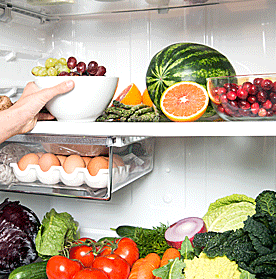1 Organize and manage your refrigerator and oven space in a way to keep hot foods at 140 degrees or more and cold foods at 40 degrees or below.
2 Cook food to its proper temperature to ensure that any bacteria is killed off. Leftovers should be cooked to 165 degrees and kept above 140 degrees during serving.
3 Refrigerate leftovers within two hours of preparation. Leaving food out too long is a safety hazard. Ensure the fridge is not too packed but has plenty of air circulating around the food.
4 Defrost food stuffs properly, especially poultry and meats. Allow five hours per five pounds to defrost in the refrigerator after removing from a deep freeze. Never defrost on the kitchen counter.
5 Wash your hands thoroughly and often. It’s a good habit to clean hands before, during and after food preparation. It’s the easiest way to minimize bacterial contamination.
6 Wash all fresh produce, even prepackaged greens to minimize potential bacterial contamination. Make sure kitchen counters, sponges, cutting boards and knives are all well scrubbed.
7 Reheat leftovers to 165 degrees. Popping cold food into the microwave may seem safe enough. But you really need to use a thermometer to make sure all the food is reheated enough to kill bacteria.
8 Do not allow guests with inquisitive fingers in your kitchen, especially if they happen to visit you in the cold and flu season.
9 Always check the use-by or expiration dates of food products. Make it a habit to look for the fine print on ready-made food items for the recommended consumption period.
10 Do not eat food containing uncooked eggs, or you risk contract salmonella. Eggs should always be stored in a fridge and cooked well.
